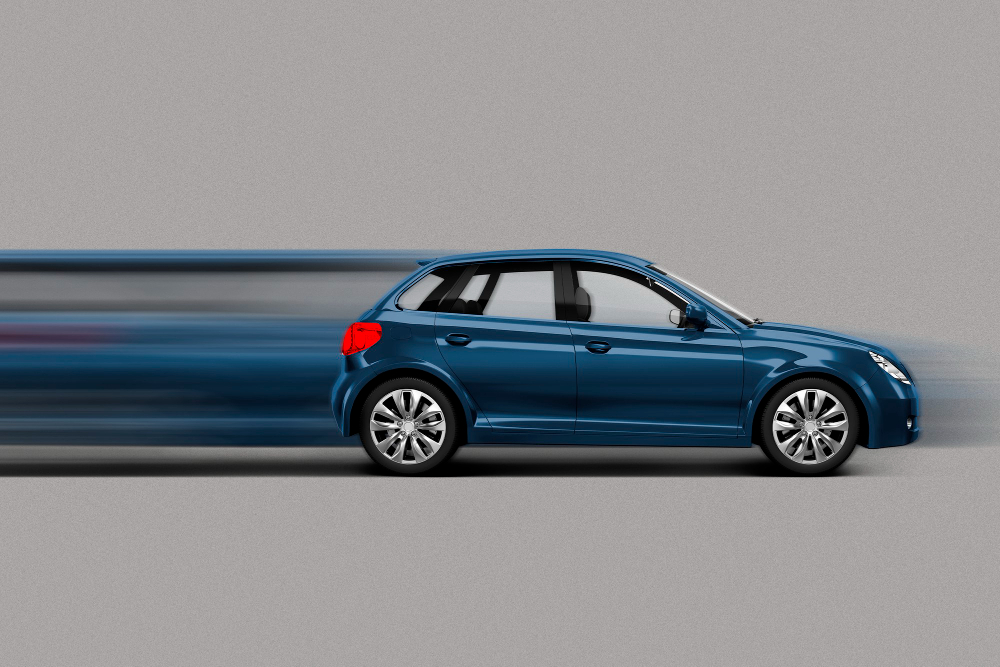The Role of Vehicle Inspections in Car Insurance Approval

Introduction
When applying for car insurance, most people focus on comparing premiums, coverage types, and deductibles. However, one crucial step often determines whether your insurance application is approved smoothly — the vehicle inspection.
A vehicle inspection is more than a routine check. It serves as an essential verification process that helps insurance companies assess the condition, safety, and insurable value of your car. The inspection protects both the policyholder and the insurer from future disputes or hidden damages.
In this article, we’ll explore why vehicle inspections are important when applying for car insurance Qatar, what insurers look for, how the process works, and what steps you can take to ensure a successful inspection.
1. What Is a Vehicle Inspection?
A vehicle inspection is a systematic evaluation of a car’s physical and mechanical condition conducted before approving or renewing an insurance policy. It can be carried out by the insurance company’s authorized agents, partner garages, or certified inspection centers.
1.1 Purpose of the Inspection
The main goal of the inspection is to verify:
- The current condition of the car (before coverage starts)
- The accuracy of information provided in the application
- The absence of pre-existing damage
- The value of the car for setting appropriate coverage limits
Essentially, it ensures that the vehicle being insured matches the risk level and value that the policy is based on.
1.2 When Inspections Are Required
Not every insurance policy requires an inspection. Insurers typically request it in the following cases:
- When applying for comprehensive insurance for a used or imported car
- Renewal of a lapsed or expired policy
- When transferring ownership or changing insurance providers
- After major repairs or modifications
- Following an accident claim
In Qatar and other Gulf countries, inspections are especially common for comprehensive coverage or when vehicles are older than a certain number of years.
2. Why Insurers Require Vehicle Inspections
Insurance companies rely on inspections to make informed underwriting decisions. Let’s examine the key reasons why inspections are an integral part of the approval process.
2.1 Verification of Vehicle Condition
When you apply for car insurance, you declare your vehicle’s details — model, year, mileage, and condition. The inspection confirms these details and ensures that the car doesn’t have hidden damage that could lead to an immediate claim after policy issuance.
2.2 Accurate Risk Assessment
A vehicle’s condition directly impacts its risk profile. For instance:
- A car with worn-out brakes or damaged bodywork poses higher accident risks.
- Vehicles in poor condition may be more vulnerable to mechanical failures or breakdowns.
The inspection helps insurers evaluate how much risk they’re taking on before approving coverage.
2.3 Prevention of Fraudulent Claims
One of the most important functions of a pre-insurance inspection is to prevent insurance fraud. Without it, a policyholder might:
- Insure a vehicle that’s already damaged and later claim it was a new accident.
- Overstate the car’s value or modifications to receive higher compensation.
- Insure a stolen or tampered vehicle.
By documenting the car’s condition through photos and reports, insurers establish a clear “before” record — making fraudulent claims far less likely.
2.4 Determining the Vehicle’s Insurable Value
The inspection helps determine the Insured Declared Value (IDV) — the maximum amount payable if the vehicle is stolen or written off. The IDV is calculated based on the car’s current market value, depreciation, and overall condition.
Accurate IDV determination ensures fair pricing and adequate protection for both parties.
3. The Vehicle Inspection Process Explained
A typical vehicle inspection follows a standardized process. While it may vary slightly among insurers, the core steps remain consistent.
3.1 Step 1: Scheduling the Inspection
Once your insurance application is received, the insurer schedules an inspection. This can be done:
- At a designated inspection center
- Through a partner garage
- At your home or office (mobile inspection service)
3.2 Step 2: Physical Examination
A certified inspector visually examines the car, checking for:
- Body condition (scratches, dents, rust)
- Paint consistency (to detect previous accidents)
- Lights, mirrors, and glass
- Tires and wheels
- Engine bay and undercarriage
- Vehicle Identification Number (VIN) and registration details
3.3 Step 3: Functional Checks
Some inspections also include brief functional tests, such as:
- Brake efficiency
- Steering response
- Dashboard warning lights
- Horn and indicators
- Air conditioning performance
This ensures the vehicle meets minimum safety and performance standards.
3.4 Step 4: Photographic Documentation
High-resolution photographs of the vehicle are taken from all angles — front, rear, sides, interior, engine, and odometer. These images serve as official records of the car’s pre-insurance condition.
3.5 Step 5: Report Generation
The inspector compiles a detailed report highlighting:
- Vehicle details and registration information
- Visible damages, if any
- Mileage reading
- Condition summary
- Inspection date and location
This report is then submitted to the insurance company for underwriting review.
4. What Insurers Look for During an Inspection
Different insurance companies may prioritize certain aspects based on policy type, but generally, they focus on the following:
4.1 Vehicle Identification
- VIN and chassis number verification
- Registration number match
- Confirmation of ownership and documentation
This step ensures there’s no mismatch or duplication of vehicle records.
4.2 Structural Integrity
Inspectors assess the vehicle’s frame and body to ensure it hasn’t been severely damaged or repaired after an accident. Cars with structural issues might be deemed uninsurable for comprehensive coverage.
4.3 Engine and Mechanical Condition
The engine’s performance, fluid levels, and signs of leakage are reviewed. Excessive oil leaks or engine modifications can affect insurability or lead to higher premiums.
4.4 Electrical and Safety Components
Proper functioning of airbags, seatbelts, lights, and sensors is essential. Faulty safety systems may disqualify a vehicle from comprehensive coverage until repaired.
4.5 Modifications and Add-ons
Aftermarket modifications — such as upgraded sound systems, performance tuning, or body kits — can affect insurance approval. Insurers document these to adjust coverage accordingly.
4.6 Existing Damage
Pre-existing scratches, dents, or cracks are recorded. Future claims related to these damages are not covered, preventing disputes later.
5. How Inspections Affect Insurance Approval
5.1 Smooth Approval for Well-Maintained Cars
If your vehicle passes the inspection with no major issues, your policy is approved quickly. The clean inspection record demonstrates that your car is in good condition and poses minimal risk.
5.2 Conditional Approval
If minor issues are found (e.g., small dents, tire wear), the insurer may issue conditional approval. You might be advised to repair certain defects before the policy takes effect.
5.3 Delayed or Rejected Applications
Severe issues such as major accident damage, tampered VINs, or unsafe mechanical conditions can lead to delayed approval or outright rejection. The insurer may request a follow-up inspection after repairs.
6. How Vehicle Condition Affects Premiums
The condition of your car directly impacts the cost of your insurance premium.
- Excellent condition: Lower risk, leading to reduced premiums.
- Average condition: May attract moderate premiums.
- Poor condition: Higher likelihood of breakdowns or claims — resulting in increased premiums or limited coverage options.
In addition, certain defects like worn-out tires, damaged bumpers, or cracked windshields can increase your risk category until repaired.
7. Post-Accident and Renewal Inspections
7.1 After an Accident
After filing a claim, insurers often re-inspect the car to assess:
- Extent of damage
- Repair quality after service
- Whether the vehicle remains roadworthy
Post-accident inspections are essential to validate claim settlements and future coverage.
7.2 At Policy Renewal
If a policy has lapsed or the vehicle has undergone modifications, insurers may require a renewal inspection. This ensures that no unreported damages occurred during the lapse period.
8. Benefits of Vehicle Inspections for Policyholders
Vehicle inspections aren’t just for insurers — they also offer several benefits to you as the car owner.
8.1 Transparency and Protection
A documented inspection protects you from wrongful claim denials. The report proves the car’s original condition at the time of insurance approval.
8.2 Fair Premium Assessment
Accurate inspection data ensures you pay a fair premium based on your car’s true condition, not generic assumptions.
8.3 Peace of Mind
Knowing that your vehicle has been verified as roadworthy provides confidence that your coverage is valid and reliable in case of an accident.
8.4 Faster Claim Settlements
With pre-inspection photographs on file, insurers can easily compare damages during a claim, leading to quicker settlements.
9. How to Prepare for a Successful Vehicle Inspection
To ensure your inspection goes smoothly and your insurance approval isn’t delayed, follow these steps:
- Clean your vehicle inside and out to make all areas visible.
- Fix minor issues such as broken lights or low tire pressure.
- Gather documents: Vehicle registration, driving license, and previous insurance papers.
- Remove unnecessary modifications that aren’t declared in your insurance form.
- Be honest about your vehicle’s condition — transparency avoids future disputes.
A well-prepared car not only passes inspection faster but may also qualify for better premium rates.
10. Common Reasons Vehicles Fail Inspections
- Mismatched or tampered VIN/chassis number
- Evidence of flood or major accident damage
- Severe engine oil leaks
- Faulty brakes or steering
- Worn-out tires or suspension
- Non-functioning lights or safety features
- Undeclared modifications or illegal alterations
In such cases, insurers typically request repairs before approving coverage.
11. Vehicle Inspections in Qatar and the GCC
11.1 Regulatory Context
In Qatar, all vehicles must undergo annual roadworthiness inspections under the Traffic Department, especially before registration renewal.
For car insurance, insurers may require a supplementary inspection to verify vehicle condition independently of the government inspection.
11.2 Practices Among Local Insurers
Leading insurers like Qatar General Insurance (QGIRCO) emphasize transparent and efficient vehicle inspection processes as part of their underwriting standards.
Their inspection ensures that customers receive the right level of coverage and that claims can be processed fairly and efficiently.
11.3 Regional Trends
Across the GCC, insurers are increasingly adopting digital inspection technologies — including mobile photo uploads and AI-based damage assessments — to speed up approvals and reduce fraud.
12. Digital Inspections: The Future of Car Insurance Approval
Technology is transforming the way insurers handle vehicle inspections.
12.1 Photo-Based Inspections
Many insurers now allow customers to upload photos via mobile apps. These are reviewed by automated systems to detect damages and verify details.
12.2 AI-Powered Damage Detection
Artificial intelligence can analyze images to identify scratches, dents, or inconsistencies, reducing human error and speeding up processing time.
12.3 Real-Time Data Integration
Telematics and connected car systems can share real-time data — such as mileage, diagnostics, and driving behavior — to complement physical inspections.
Digital inspections enhance transparency, convenience, and speed while ensuring accurate risk assessment.
13. The Link Between Vehicle Inspections and Claims
A proper pre-insurance inspection provides a baseline for future claims. When a claim is filed, insurers refer back to the inspection report to:
- Compare new damages with pre-existing ones
- Validate the authenticity of the claim
- Prevent over-claiming or fraudulent reports
This ensures that compensation is accurate, fair, and dispute-free.
14. Frequently Asked Questions
Q1: Is an inspection mandatory for all car insurance policies?
Not always. It’s usually required for comprehensive insurance, new policies, or renewals after a lapse.
Q2: Does inspection delay policy approval?
No — modern inspections are quick and often completed within 24–48 hours.
Q3: Can I choose where the inspection happens?
Many insurers offer flexibility. You can visit an approved center or request a home or workplace inspection.
Q4: What happens if my car fails the inspection?
You’ll be advised to repair the issues and resubmit for re-inspection before the policy is approved.
Q5: Do new cars need inspection?
Brand-new cars from authorized dealers often skip the inspection, as they’re considered damage-free and verified by the dealer.
15. Conclusion
Vehicle inspections play a vital role in ensuring fair, accurate, and transparent car insurance approvals. They safeguard both the insurer and the policyholder by verifying the vehicle’s condition, preventing fraud, and establishing a clear baseline for future claims.
For policyholders, a successful inspection means peace of mind — knowing your car is properly protected and your premiums are fairly calculated.
Whether you’re insuring a new car or renewing an existing policy, keeping your vehicle in good condition and understanding the inspection process will always work in your favor — ensuring smooth approval and continued protection on the road.



